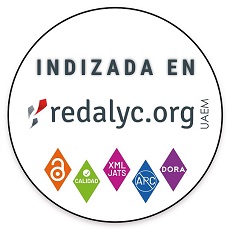The rise of the middle class in Ecuador during the oil boom
El crecimiento de la clase media en Ecuador durante el boom petrolero
O crescimento da classe média no Equador durante o boom petroleiro
DOI:
https://doi.org/10.15446/cuad.econ.v36n72.65821Palabras clave:
Ecuador, middle class, inequality, commodities boom (en)Ecuador, clase media, inequidad, boom de commodities (es)
Equador, classe média, iniquidade, boom das commodities (pt)
Descargas
En este artículo analizamos la evolución de la clase media en Ecuador durante el boom de los commodities (2005-2015). Utilizando la definición de clase media propuesta por López-Calva y Ortiz-Juárez (2014) documentamos el gran crecimiento de la clase media, la cual se ha duplicado durante este periodo llegando a un pico de 37,4% de la población en 2015. Mostramos que tanto el crecimiento eco-nómico como la reducción de la desigualdad han cumplido un papel importante en esta dinámica, si bien el crecimiento es responsable de más de 3/4 del incremento de la clase media. Basándonos en un análisis de las condiciones macroeconómicas y del mercado laboral, argumentamos que la ralentización del crecimiento y de la reducción de la desigualdad ocurridas luego del final del boom de los commodities presenta un riesgo para el tamaño de la clase media, lo que constituye un serio reto para los hacedores de política.
Referencias
Andrango, J. E., Grijalva, D. F., & Romero, P. P. (2016). Liberalism in Ecuador: In search of a constitution (Working Paper). USFQ Department of Economics.
Azevedo, J. P., López-Calva, L. F., Lustig, N., & Ortiz-Juárez, E. (2015). Inequality, mobility and middle classes in Latin America. In J. Dayton-Johnson (Ed.), Latin America’s emerging middle classes: Economic perspectives (p. 32-50). UK: Palgrave Macmillan.
Banco Central del Ecuador (2015). Boletín Anuario. Available at: https://www.bce.fin.ec/index.php/component/k2/item/327-ver-bolet%C3%ADn-anuario-por-a%C3%B1os.
Banco Central del Ecuador(2017). Información Estadística Mensual. Available at: https://www.bce.fin.ec/index.php/component/k2/item/776.
Banerjee, A. V. & Duflo, E. (2008). What is middle class about the middle classes around the world? Journal of Economic Perspectives, 22(2), 3-28.
Bénabou, R. (1996). Inequality and growth. In B. S. Bernanke & J. J. Rotemberg (Eds.), NBER macroeconomics annual, (vol. 11, Ch. 1, pp. 11-92). Boston, MA: MIT Press.
Birdsall, N. (2010). The (indispensable) middle class in developing countries. In R. Kanbur & M. Spence (Eds.), Equity and growth in a globalizing world (p. 157-187). Washington D. C.: The World Bank
Birdsall, N. (2012). A note on the middle class in Latin America. Inequality in Asia and the Pacific (Manila: Asian Development Bank , 2013), Forthcoming.
Birdsall, N. (2015). Does the rise of the middle class lock in good government in the developing world? The European Journal of Development Research, 27(2), 217-229.
Birdsall, N., Graham, C., & Pettinato, S. (2000). Stuck in the tunnel: Is globalization muddling the middle class? (Working Paper 14). Center on Social and Economic Dynamics.
Cárdenas, M., Kharas, H., & Henao, C. (2015). Latin America’s global middle class: A preference for growth over equality. In J. Dayton-Johnson (Ed.), Latin America’s emerging middle classes: Economic perspectives (p. 51-69). UK: Palgrave Macmillan .
Chun, N., Hasan, R., Rahman, M. H., & Ulubaşoğlu, M. A. (2017). The role of middle class in economic development: What do cross-country data show? Review of Development Economics, 21(2), 404-424. doi:10.1111/rode.12265.
Conaghan, C. (2016). Delegative democracy revisited: Ecuador under Correa. Journal of Democracy, 27(3), 109-118.
Dabla-Norris, E., Kochhar, K., Suphaphiphat, N., Ricka, F., & Tsounta, E. (2015). Causes and consequences of income inequality: A global perspective. International Monetary Fund.
Datt, G., & Ravallion, M. (1992). Growth and redistribution components of changes in poverty measures. Journal of Development Economics, 38(2), 275-295.
Dayton-Johnson, J. (2015). Making sense of Latin America’s middle classes. In J. Dayton-Johnson (Ed.), Latin America’s emerging middle classes: Economic perspectives (p. 1-31). UK: Palgrave Macmillan .
Doepke, M., & Zilibotti, F. (2005). Social class and the spirit of capitalism. Journal of the European Economic Association, 3(2-3), 516-524.
Doepke, M., & Zilibotti, F. (2008). Occupational choice and the spirit of capitalism. The Quarterly Journal of Economics, 123(2), 747-793.
Easterly, W. (2001). The middle class consensus and economic development. Journal of Economic Growth, 6 (4), 317-335.
ECLAC. (2016). CEPALSTAT Databases and Statistical Publications. Available at: http://estadisticas.cepal.org/cepalstat/WEB_CEPALSTAT/Portada.asp?idioma=i.
Ferreira, F. H., Messina, J., Rigolini, J., López-Calva, L.-F., Lugo, M. A., & Vakis, R. (2013). Economic mobility and the rise of the Latin American middle class. World Bank Publications.
Fukuyama, F. (2012). The future of history: Can liberal democracy survive the decline of the middle class. Foreign Aff., 91, 53.
Gachet, I., Grijalva, D. F., Ponce, P., & Rodríguez, D. (2016). Vertical and horizontal inequality in Ecuador: The lack of sustainability (Working Paper 106/2016). UNU WIDER.
Halter, D., Oechslin, M., & Zweimüller, J. (2014). Inequality and growth: The neglected time dimension. Journal of Economic Growth , 19(1), 81-104.
Herzer, D., & Vollmer, S. (2012). Inequality and growth: Evidence from panel cointegration. The Journal of Economic Inequality, 10(4), 489-503.
Lerman, R. I., & Yitzhaki, S. (1985). Income inequality effects by income source: A new approach and applications to the United States. The Review of Economics and Statistics, 67(1), 151-156.
López-Calva, L. F., & Ortiz-Juárez, E. (2014). A vulnerability approach to the definition of the middle class. The Journal of Economic Inequality , 12(1), 23-47.
López-Feldman, A. (2006). Decomposing inequality and obtaining marginal effects. Stata Journal, 6(1), 106-111.
Lustig, N., & López-Calva, L. F. (2010). Explaining the decline in inequality in Latin America: Technological change, educational upgrading, and democracy. In L. F. López-Calva & N. C. Lustig (Eds.), Declining inequality in Latin America a decade of progress? (Ch. 1). Washington, D. C.: Brookings Institution Press and United Nations Development Programme.
Lustig, N., López-Calva, L. F., & Ortiz-Juárez, E. (2013). Declining inequality in Latin America in the 2000s: The cases of Argentina, Brazil, and Mexico. World Development, 44, 129-141.
Milanovic, B. (2016). Global inequality: A new approach for the age of globalization. Harvard University Press.
Murphy, K. M., Shleifer, A., & Vishny, R. W. (1989). Industrialization and the big push. Journal of Political Economy, 97(5), 1003-1026.
Ostry, J. D., Berg, A., & Tsangarides, C. G. (2014). Redistribution, inequality, and growth. International Monetary Fund.
Ponce, J., & Vos, R. (2014). Redistribution without structural change in Ecuador: Rising and falling income inequality in the 1990s and 2000s. In G. A. Cornia (Ed.), Falling inequality in Latin America. Oxford: Oxford University Press.
Ravallion, M. (2010). The developing world’s bulging (but vulnerable) middle class. World Development , 38(4), 445-454.
Ross, M. L. (2007). How Mineral-Rich states can reduce inequality. In M. Humphreys, J. D. Sachs, & J. E. Stiglitz (Eds.), Escaping the resource curse (p. 237-255). New York: Columbia University Press.
Ross, M. L., Lujala, P., & Rustad, S. A. (2012). Horizontal inequality, decentralizing the distribution of natural resource revenues, and peace. In P. Lujala & S. A. Rustad (Eds.), High-value natural resources and post-conflict peacebuilding (p. 251-259). London: Earthscan.
SIISE. (2016). System of Social Indicators (SIISE) - Ministry of Social Welfare. Available at: http://www.siise.gob.ec/siiseweb/siiseweb.html?sistema=1#.
World Bank. (2016). World Bank, International Comparison Program Database. Available at: http://data.worldbank.org/indicator/PA.NUS.PRVT.PP.
Cómo citar
APA
ACM
ACS
ABNT
Chicago
Harvard
IEEE
MLA
Turabian
Vancouver
Descargar cita
CrossRef Cited-by
1. Diego F. Grijalva, Mary Lou Ponsetto, Yelitza Pontón. (2019). Does an oil boom promote firms’ R&D expenditure? Evidence from Ecuador. Management Research: Journal of the Iberoamerican Academy of Management, 18(2), p.171. https://doi.org/10.1108/MRJIAM-11-2018-0889.
2. Alexandra Serrano-Flores, Mario Melo Cevallos, Paola Peña Terán, Gabriela León Crespo. (2024). Beliefs Supporting Positive Attitudes Toward Corporal Punishment in Ecuadorian Middle-Class Households. Journal of Interpersonal Violence, https://doi.org/10.1177/08862605241308293.
3. Ivan Gachet, Diego F. Grijalva, Paúl A. Ponce, Damián Rodríguez. (2019). Vertical and Horizontal Inequality in Ecuador: The Lack of Sustainability. Social Indicators Research, 145(3), p.861. https://doi.org/10.1007/s11205-017-1810-2.
4. Valeria Ayala, Diego F. Grijalva, Paúl A. Ponce, Yelitza Pontón. (2018). Does firm innovation lead to high growth? Evidence from Ecuadorian firms. Cuadernos de Economía, 37(75), p.697. https://doi.org/10.15446/cuad.econ.v37n75.68621.
Dimensions
PlumX
Visitas a la página del resumen del artículo
Descargas
Licencia
Derechos de autor 2017 Cuadernos de EconomíaCuadernos de Economía a través de la División de Bibliotecas de la Universidad Nacional de Colombia promueve y garantiza el acceso abierto de todos sus contenidos. Los artículos publicados por la revista se encuentran disponibles globalmente con acceso abierto y licenciados bajo los términos de Creative Commons Atribución-No_Comercial-Sin_Derivadas 4.0 Internacional (CC BY-NC-ND 4.0), lo que implica lo siguiente:





















